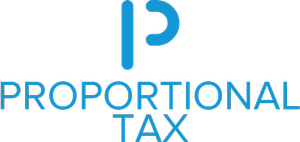Half-finished diligence can sink a transaction faster than a weak balance sheet. Early in the deal process, teams discover that the virtual data room (VDR) holds the keys to confidentiality, speed, and credibility. Yet, with dozens of vendors promising bank-grade security, the initial search feels noisy. This guide pares the noise down to signals and walks you through a structured, risk-aware path toward the VDR that matches your deal’s size, timeline, and compliance profile.
1. Map the Transaction Before You Shop
Every deal has a unique risk surface. Map it first, then align software to those contours.
- Deal type and volume. A single-asset divestiture rarely mirrors the metadata pressure of a 40-file-per-folder buy-side M&A run.
- Stakeholder mix. How many external lawyers, auditors, and investors need timed or staged entry?
- Jurisdictional reach. Cross-border work triggers GDPR, CCPA, or if health data surfaces—HIPAA.
- Timeline assumptions. Will the data room stay open for weeks or for a post-closing transition year?
Documenting these variables clarifies the minimum feature set before vendor demos begin.
2. Put Security Credentials Under the Microscope
A modern VDR should already encrypt files in transit and at rest. Go deeper:
|
Credential |
Why it matters |
|
ISO / IEC 27001 |
Verifies a systematic, audited information-security program. |
|
SOC 2 Type II |
Shows independent assurance over control design and operating effectiveness. |
|
CSA STAR Level 2 |
Indicates a third-party audit aligned with the Cloud Controls Matrix. |
Ideals, for example, is listed at Level 2 in the Cloud Security Alliance STAR Registry, confirming audited controls for confidentiality, integrity, and availability.
Dropbox DocSend inherits Dropbox’s ISO 27001 and SOC 2 Type II attestation and layers them onto DocSend’s granular document analytics.
3. Evaluate Workflow and UX, Not Just Checklists
Security without usability breeds shadow IT. Look for:
- Granular permissions. Eight or more permission tiers prevent accidental over-sharing.
- Dynamic watermarks and Fence View. Discourage screenshots while preserving readability.
- Integrated Q&A module. Keeps clarifying questions inside the audit trail.Bulk upload with automatic indexing. Saves legal teams from spreadsheet purgatory.
- Mobile review mode. Investors read decks on phones during travel; the UI must adapt.
During trials, time how long it takes a first-time user to upload, tag, and restrict a 25-file set. Anything over five minutes signals friction you’ll feel during closing week.
4. Know the Commercial Models Before Your CFO AsksExpect three pricing patterns:
- Per-page – predictable for small deals, painful when engineers upload test logs.
- Per-user – fair for controlled audiences but pricey if you must invite hundreds of bidders.
- Flat project fee – attractive for long, complex carve-outs.Request all-in quotes, including overage fees for extra gigabytes or users. Then model costs against the most data-heavy scenario you can imagine; surprises happen at 2 a.m., not during the board preview.
5. Providers Comparison
Ideals
Ideals holds ISO 27001, SOC 2 Type II, GDPR, and HIPAA credentials and is listed at CSA STAR Level 2, confirming annual third-party audits. Its security toolkit includes built-in redaction, eight-level granular permissions, Fence View, and time/IP restrictions that lock down sensitive pages before screenshots are possible. A spreadsheet-style index and role templates mean most admins launch a room in under ten minutes, even on multilingual projects.
Dropbox DocSend
Since Dropbox’s 2021 acquisition, DocSend inherits Dropbox’s ISO 27001, SOC 2, HIPAA, and CSA STAR Level 2 posture, tracked in the Dropbox Trust Center. The platform layers real-time, page-level engagement analytics, pass-code links, and automatic NDA gates onto that security backbone, giving deal teams instant visibility into who lingers on which slide. Lightweight, link-based sharing makes DocSend https://en.dataroom.co.il/docsend-data-room/ a favorite for fundraising rounds and investor updates where folder hierarchies would slow the pitch.
Intralinks VDRPro
Intralinks was the first VDR provider to earn ISO 27701 and also maintains ISO 27001 and long-standing SOC 2 Type II attestation, positioning it for heavily regulated, cross-border deals. Bank-grade controls such as lifetime document kill-switch (UNshare®) and AI-assisted redaction sit behind a single-tenant option for clients that demand maximum isolation. The platform scales comfortably for syndicates and bulge-bracket banks that need thousands of concurrent reviewers without performance hits.
Datasite Diligence
Datasite has carried ISO 27001 certification since 2007, adds ISO 27701, 27017, 27018, and renews SOC 2 Type II every year, satisfying most global compliance checklists. Its AI-driven Rapid Redact and related machine-learning apps strip PII and sensitive terms across an entire data room in minutes, trimming diligence timelines. Those automation hooks, combined with 24×7 support in 20+ languages, make Datasite a reliable fit for complex buy-side and sell-side M&A where speed and accuracy converge.
6. Quick Due-Diligence Checklist
- Match certifications to your sector’s regulator.
- Review the most recent SOC 2 report—ask for the exceptions section.
- Confirm data-center regions. European targets typically insist on EEA hosting.
- Run a permissioning test with junior staff to expose UI complexity.
- Read the breach-notification clause in the master agreement; 72-hour notice is table stakes.
- Benchmark total cost of ownership against at least one alternative quote.
- Ask for customer references in your industry vertical.
- Document exit procedures. Ensure the provider deletes encrypted backups on schedule.
Ticking every box costs a few hours today and eliminates week-long delays later.
7. Moving From Shortlist to Signature
Create a side-by-side matrix, score providers on the factors above, and weight security twice if regulators loom large. Rotate the matrix through legal, finance, and IT for blind scoring, then meet to agree on a winner. The process feels methodical because it is—yet it protects your deal from hidden fees, user confusion, and compliance gaps that surface only after documents hit the room.
Once the signatures land, invest an hour in a launch run-through with each user group. That small rehearsal often determines whether the room accelerates closing day or becomes another urgent fix-it project.
